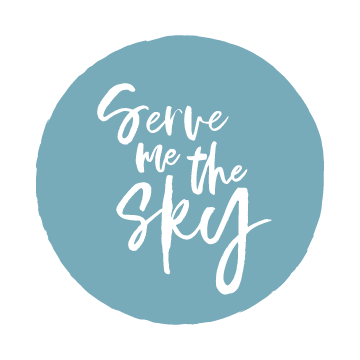A Conversation with Jackie Ortiz: Holding Space & Creating Community
/Meet Jackie Ortiz, a social media professional based in LA
This is the 11th post in the “A Conversation With” series, where I interview talented folks about their areas of marketing expertise. You can read past entries in the series here.
This month, I interviewed Jackie Ortiz, a social media professional who currently does community at Doist and runs her own business, Sarap Tees. We discussed community management, lessons learned from the nonprofit and for-profit sectors, and how marketers can play a role in the pursuit of equity at their companies. I hope you enjoy her insights!
Tell me about your career path and how you ended up in social media.
I didn’t picture myself being in social. I studied anthropology in college, and looking back, it did lend itself well to social media and all the things I do in my job day to day. Anthro is a lot of listening and looking at information; those research skills are important and have helped me with things like developing a social strategy.
I worked in market research throughout college and moved to LA shortly after graduating. I worked as a music teacher and studio coordinator, where I got my first taste of trying to increase enrollment to the school through creating creative content for social and email campaigns. From there, I worked at a nonprofit called the Pasadena Playhouse, where I was able to meld two of my loves, art and marketing. Now I’m at Doist focusing on community and I’ve been there for about eight months.
What is your definition of community management?
It’s all about building lasting relationships with your audience and knowing who your people are. You are the frontline to your brand. You’re the person your audience is going to interact with most. Right now it’s me and the support team, interacting and building relationships between the brand and our audience.
What does an average workday look like for you?
Jackie hard at work
Doist is asynchronous; we have 100 employees across 30 countries. You can build your own schedule. First thing, I check Twist, our communication app, and answer anything urgent there as we don’t really have email. I interact with people on our social channels, plan content, and keep my ear to the ground and see where the company is at. We have a strong blog and content team always pumping stuff out about productivity and remote work, which I can leverage when creating content for social.
You recently transitioned from working in the arts sector to a for-profit company. What lessons from the nonprofit world have you been able to apply to work at a for-profit?
I worked at the theatre for almost five years. At nonprofits, you’re used to working within limitations--whether that’s the budget, senior management, or the board. A lot of my creativity spurred from those limitations. I’d brainstorm, what can I do with zero budget to make people buy tickets to a show? What can we do to activate an audience within this short window of time?
Going into the tech sector was so different because more things were possible and it was overwhelming! I was able to bring my creativity to my role at Doist. One way I’ve done that is by putting a personal touch on everything we do. It’s important for people to know the faces behind the brand. We’ve been working on a video filmed in a 90s sitcom style that introduces folks to our team! It was all filmed remotely and it was so fun.
In everyday community management, rather than moving on to another response abruptly, I’m always thinking about how to continue the conversation. Is there a way we can use how they’ve mentioned us, like if they’re using the product in a really unique way? It’s about increasing conversations with our users.
What lessons from the for-profit world do you think could be applied at nonprofits?
In the nonprofit context, it’s important to have open conversations about what your needs are. Social media staff need to let others know how hard it is to create content within a limitation. If you can communicate your big dreams, or how far something can go with a little more budget, you may be able to find a way to meet in the middle and accomplish more for the brand.
When you started at Doist, what were some of the first steps you took to start building community for the brand?
Dreaming was important! I made a grand list of plans I want to accomplish in the role. One of my goals is for users to have a central place to go interact with each other. A centralized hub like that would be a pure community building effort.
What are some missed opportunities when it comes to community management?
Not listening to your users. When you’re a bigger brand, you can get caught up in the volume of responses. Actually noticing the trends of what people are saying and relaying that back to your team can be so valuable. Things like “People love this product, users are dying for this feature, can we consider it?” It makes users feel heard. I always make it a point to actually get back to people. I make a list and circle back. We’re creating conversations together.
What community management tactics have you found that have a higher ROI than others?
Holding space for your audience is incredibly important. It’s imperative to create a forum for people to congregate--whether that’s a subreddit, a Twitter list, or an email opt-in. A central hub can allow users to interact and meet each other. It boosts word of mouth and has the most ROI.
How do you measure the impact of your community management efforts?
Anecdotal evidence is great--do people show up in our community? If we release a new feature, are people excited? Are they talking about it organically? What people are saying about us is more meaningful than the amount of likes a post gets. Every week, I do at least one post to get people talking, with questions like “What are you most excited about accomplishing this week?” or “What is your biggest struggle with WFH?” They prompt so much engagement and interaction!
An example of a Doist tweet prompting genuine interactions
How do you assess a company’s efforts at representation, equity, and inclusion when job hunting?
One reason I wanted to leave theatre and the arts is the reckoning going on with white supremacy in white American theatre. I never saw myself resolving that internally. I wanted to work at a company that aligned with my values, where I could have autonomy and not worry about voicing my opinions and having them shot down because I’m a woman and a woman of color.
I appreciated that Doist’s values are point blank, and they try to live them. When job hunting, I also looked to see if there were other people like me on the team page! I knew at Doist I would have a level of autonomy and psychological safety. I could say something like “Our company made a statement in June, and I think there are better ways for us to embody that statement” and know it wouldn’t jeopardize my position!
How can marketers make a difference when it comes to representation, equity, and inclusion?
Transparency. If your company is having internal conversations about representation, equity, and inclusion, say that you’re having them. Open the gate wider. Ask your audience, “What should we be talking about?” It’s delicate with bigger brands, they’re afraid of being political. But this isn’t political, it’s human. These are things we deal with daily. Doist made an antiracist statement, but they also had an open conversation at the company about racism people had encountered in their daily lives.
Tell me a bit about your thoughts on introverts in the workplace and in leadership.
I consider myself an introvert. I decided to lean into the fact that I’m a quiet person after reading a lot about introverts and leadership. I realized that there’s nothing stopping me from being a leader! I see it as a strength, I’m a great listener. I don’t think the loudest voice is always the right voice.
Moving to a remote company has enhanced the things I love about myself as an introvert. The world is built for extroverts, people who speak their mind 24/7. It’s not that introverts don't speak up, though, we speak up when it matters!
I’d love to hear about your business, Sarap Tees. Why did you start it? How do you use social media to grow your business?
Halo halo crewneck from Sarap Tees
I started Sarap Tees in 2019 as a way to reclaim my Filipino identity. We sell t-shirts that celebrate Filipino cuisine! I grew up in a city without many Filipinos in it, and now in LA, there’s a thriving community of proud Filipino people. I want to run toward the things I ran away from as a kid. Our shirts are designed to be simple, just bearing a word that you can rep proudly. It’s a good gateway to conversation!
We use social for all our marketing efforts. Prior to the pandemic, all our collaborations have come from social media! We’ve built community with local Filipino businesses around LA and with folks in Seattle and Virginia. I love lifting up other Filipino businesses and our culture!
What are some of your favorite resources for staying up to date on marketing/social media?
Sprout Social’s blog is really good. Marketing Twitter has been a good place for me, finding people experiencing the same things I am. And I can often get my questions answered on LinkedIn.
Where can people find you/your work?
I’m @otherjackieo on Twitter and Instagram, and my business is Sarap Tees.
For more social media insights, sign up for our unboring email newsletter!






